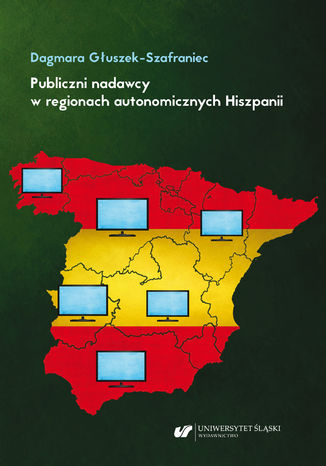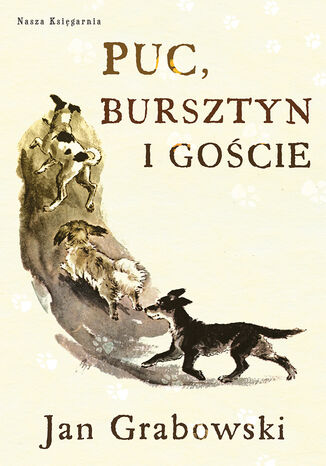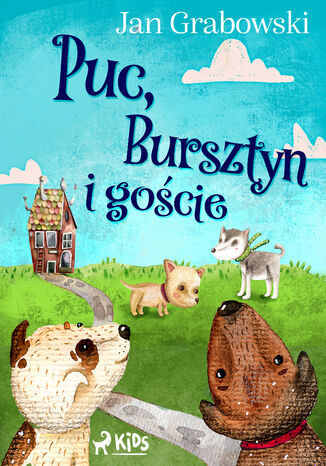Categories
Ebooks
-
Business and economy
- Bitcoin
- Businesswoman
- Coaching
- Controlling
- E-business
- Economy
- Finances
- Stocks and investments
- Personal competence
- Computer in the office
- Communication and negotiation
- Small company
- Marketing
- Motivation
- Multimedia trainings
- Real estate
- Persuasion and NLP
- Taxes
- Social policy
- Guides
- Presentations
- Leadership
- Public Relation
- Reports, analyses
- Secret
- Social Media
- Sales
- Start-up
- Your career
- Management
- Project management
- Human Resources
-
For children
-
For youth
-
Education
-
Encyclopedias, dictionaries
-
E-press
- Architektura i wnętrza
- Health and Safety
- Biznes i Ekonomia
- Home and garden
- E-business
- Ekonomia i finanse
- Esoterecism
- Finances
- Personal finance
- Business
- Photography
- Computer science
- HR & Payroll
- For women
- Computers, Excel
- Accounts
- Culture and literature
- Scientific and academic
- Environmental protection
- Opinion-forming
- Education
- Taxes
- Travelling
- Psychology
- Religion
- Agriculture
- Book and press market
- Transport and Spedition
- Healthand beauty
-
History
-
Computer science
- Office applications
- Data bases
- Bioinformatics
- IT business
- CAD/CAM
- Digital Lifestyle
- DTP
- Electronics
- Digital photography
- Computer graphics
- Games
- Hacking
- Hardware
- IT w ekonomii
- Scientific software package
- School textbooks
- Computer basics
- Programming
- Mobile programming
- Internet servers
- Computer networks
- Start-up
- Operational systems
- Artificial intelligence
- Technology for children
- Webmastering
-
Other
-
Foreign languages
-
Culture and art
-
School reading books
-
Literature
- Antology
- Ballade
- Biographies and autobiographies
- For adults
- Dramas
- Diaries, memoirs, letters
- Epic, epopee
- Essay
- Fantasy and science fiction
- Feuilletons
- Work of fiction
- Humour and satire
- Other
- Classical
- Crime fiction
- Non-fiction
- Fiction
- Mity i legendy
- Nobelists
- Novellas
- Moral
- Okultyzm i magia
- Short stories
- Memoirs
- Travelling
- Narrative poetry
- Poetry
- Politics
- Popular science
- Novel
- Historical novel
- Prose
- Adventure
- Journalism, publicism
- Reportage novels
- Romans i literatura obyczajowa
- Sensational
- Thriller, Horror
- Interviews and memoirs
-
Natural sciences
-
Social sciences
-
School textbooks
-
Popular science and academic
- Archeology
- Bibliotekoznawstwo
- Cinema studies
- Philology
- Polish philology
- Philosophy
- Finanse i bankowość
- Geography
- Economy
- Trade. World economy
- History and archeology
- History of art and architecture
- Cultural studies
- Linguistics
- Literary studies
- Logistics
- Maths
- Medicine
- Humanities
- Pedagogy
- Educational aids
- Popular science
- Other
- Psychology
- Sociology
- Theatre studies
- Theology
- Economic theories and teachings
- Transport i spedycja
- Physical education
- Zarządzanie i marketing
-
Guides
-
Game guides
-
Professional and specialist guides
-
Law
- Health and Safety
- History
- Road Code. Driving license
- Law studies
- Healthcare
- General. Compendium of knowledge
- Academic textbooks
- Other
- Construction and local law
- Civil law
- Financial law
- Economic law
- Economic and trade law
- Criminal law
- Criminal law. Criminal offenses. Criminology
- International law
- International law
- Health care law
- Educational law
- Tax law
- Labor and social security law
- Public, constitutional and administrative law
- Family and Guardianship Code
- agricultural law
- Social law, labour law
- European Union law
- Industry
- Agricultural and environmental
- Dictionaries and encyclopedia
- Public procurement
- Management
-
Tourist guides and travel
- Africa
- Albums
- Southern America
- North and Central America
- Australia, New Zealand, Oceania
- Austria
- Asia
- Balkans
- Middle East
- Bulgary
- China
- Croatia
- The Czech Republic
- Denmark
- Egipt
- Estonia
- Europe
- France
- Mountains
- Greece
- Spain
- Holand
- Iceland
- Lithuania
- Latvia
- Mapy, Plany miast, Atlasy
- Mini travel guides
- Germany
- Norway
- Active travelling
- Poland
- Portugal
- Other
- Przewodniki po hotelach i restauracjach
- Russia
- Romania
- Slovakia
- Slovenia
- Switzerland
- Sweden
- World
- Turkey
- Ukraine
- Hungary
- Great Britain
- Italy
-
Psychology
- Philosophy of life
- Kompetencje psychospołeczne
- Interpersonal communication
- Mindfulness
- General
- Persuasion and NLP
- Academic psychology
- Psychology of soul and mind
- Work psychology
- Relacje i związki
- Parenting and children psychology
- Problem solving
- Intellectual growth
- Secret
- Sexapeal
- Seduction
- Appearance and image
- Philosophy of life
-
Religion
-
Sport, fitness, diets
-
Technology and mechanics
Audiobooks
-
Business and economy
- Bitcoin
- Businesswoman
- Coaching
- Controlling
- E-business
- Economy
- Finances
- Stocks and investments
- Personal competence
- Communication and negotiation
- Small company
- Marketing
- Motivation
- Real estate
- Persuasion and NLP
- Taxes
- Social policy
- Guides
- Presentations
- Leadership
- Public Relation
- Secret
- Social Media
- Sales
- Start-up
- Your career
- Management
- Project management
- Human Resources
-
For children
-
For youth
-
Education
-
Encyclopedias, dictionaries
-
E-press
-
History
-
Computer science
-
Other
-
Foreign languages
-
Culture and art
-
School reading books
-
Literature
- Antology
- Ballade
- Biographies and autobiographies
- For adults
- Dramas
- Diaries, memoirs, letters
- Epic, epopee
- Essay
- Fantasy and science fiction
- Feuilletons
- Work of fiction
- Humour and satire
- Other
- Classical
- Crime fiction
- Non-fiction
- Fiction
- Mity i legendy
- Nobelists
- Novellas
- Moral
- Okultyzm i magia
- Short stories
- Memoirs
- Travelling
- Poetry
- Politics
- Popular science
- Novel
- Historical novel
- Prose
- Adventure
- Journalism, publicism
- Reportage novels
- Romans i literatura obyczajowa
- Sensational
- Thriller, Horror
- Interviews and memoirs
-
Natural sciences
-
Social sciences
-
Popular science and academic
-
Guides
-
Professional and specialist guides
-
Law
-
Tourist guides and travel
-
Psychology
- Philosophy of life
- Interpersonal communication
- Mindfulness
- General
- Persuasion and NLP
- Academic psychology
- Psychology of soul and mind
- Work psychology
- Relacje i związki
- Parenting and children psychology
- Problem solving
- Intellectual growth
- Secret
- Sexapeal
- Seduction
- Appearance and image
- Philosophy of life
-
Religion
-
Sport, fitness, diets
-
Technology and mechanics
Videocourses
-
Data bases
-
Big Data
-
Biznes, ekonomia i marketing
-
Cybersecurity
-
Data Science
-
DevOps
-
For children
-
Electronics
-
Graphics/Video/CAX
-
Games
-
Microsoft Office
-
Development tools
-
Programming
-
Personal growth
-
Computer networks
-
Operational systems
-
Software testing
-
Mobile devices
-
UX/UI
-
Web development
-
Management
Podcasts
Ptaszkipodług Arystofanesa Osoby Burzycki Dudas Puchacz Papuga Chór ptaków Dolina otoczona lasem i skałami, na których szczycie ruiny. DUDAS z jednej strony na wierzchu skały Och! niebezpieczna ścieżka --! o! nieszczęsna droga! BURZYCKI z drugiej strony skały -- ukryty Pst! znów go słyszę! Hop! DUDAS odpowiada Houp! BURZYCKI Na jakążeś zbłąkał się skałę? DUDAS Oj! biedaż mi, bieda! BURZYCKI Cierpliwości! mój przyjacielu! DUDAS Utkwiłem w cierniach i głogu! BURZYCKI Tylko powoli! [...]Johann Wolfgang von GoetheUr. 28 sierpnia 1749 r. we Frankfurcie Zm. 22 marca 1832 r. w Weimarze Najważniejsze dzieła: Cierpienia młodego Wertera (1774); Goetz von Berlichingen (1773), Król olch (1782), Herman i Dorota (1798), Lis Przechera (1794), Lata nauki Wilhelma Meistra (1796), Faust (cz.I 1808, cz.II 1831), Powinowactwo z wyboru (1809), Lata wędrówki Wilhelma Meistra (1821); Z mojego życia. Zmyślenie i prawda (1811-1833) Najwybitniejszy poeta niemiecki czasu ?burzy i naporu". Dał kulturze europejskiej nowy typ romantycznego bohatera, ale nie uważał się za romantyka, pozostając wierny klasycyzmowi. Pochodził z zamożnej rodziny mieszczańskiej. Już w młodości czuł uwielbienie dla sztuki, miał też w tej dziedzinie gruntowne wykształcenie, dlatego porzucił adwokaturę dla poezji. Jego zainteresowania literackie (Homerem i Biblią jako zapisem ?dzieciństwa ludzkości", Shakespearem, pieśniami ludowymi) ukierunkował J.G. Herder. W 1775 r. Goethe przeniósł się do Weimaru, gdzie założył szkołę dla młodych artystów. Przyjaźnił się z F. Schillerem. Żywił szczególną sympatię do Polaków, gościł u siebie m.in. A. Mickiewicza, którego kazał sportretować. autor: Magdalena Szmigielska Kupując książkę wspierasz fundację Nowoczesna Polska, która propaguje ideę wolnej kultury. Wolne Lektury to biblioteka internetowa, rozwijana pod patronatem Ministerstwa Edukacji Narodowej. W jej zbiorach znajduje się kilka tysięcy utworów, w tym wiele lektur szkolnych zalecanych do użytku przez MEN, które trafiły już do domeny publicznej. Wszystkie dzieła są odpowiednio opracowane - opatrzone przypisami oraz motywami.
Niemiecki polityk, uczony i poeta przełomu XVIII i XIX wieku Johann Wolfgang von Goethe jest uznawany za najwybitniejszego przedstawiciela literatury niemieckiej, mistrza klasycyzmu weimarskiego oraz prekursora romantyzmu. Do jego najwybitniejszych dzieł należą Cierpienia młodego Wertera, Król Elfów oraz Faust. Ptaszki podług Arystofanesa należą do nielicznych napisanych przez niego komedii.
Jerzy Liebert III Ptaszki św. Franciszka Ptaszki lecą pytać się, com widział w niebiosach: duszyczki wasze bardzo tęskniące. Tadeusz Miciński O szybę błękitną Bijemy co dzień, Panie, Wątłymi skrzydełkami. Po drzewach stłoczeni, Czekając, śpiewamy Za Twymi drzwiami. Słońce oglądamy, I nad drzewem fruwamy, I śpiewamy od zorzy. Czy już tak na zawsze Zostaniemy tutaj, Na świecie bożym? Nie masz na nas kary, Nie będzie i nagrody? W sw... Jerzy Liebert Ur. ur. 24 lipca 1904 w Częstochowie Zm. zm. 19 czerwca 1931 w Warszawie Najważniejsze dzieła: tomiki poezji Druga ojczyzna (1925), Gusła (1930), Kołysanka jodłowa (1932); zbiór korespondencji Listy do Agnieszki Poezja Lieberta stanowi zapis jego poszukiwań metafizycznych. Tematyka religijno-filozoficzna przejawia się już w debiutanckim wierszu Zmartwychwstanie. Modlitwa młodego poety, opublikowanym w chrześcijańskim Czynie. Związany ze środowiskiem Skamandrytów, przyjaźnił się Liebert z Jarosławem Iwaszkiewiczem, publikował w Skamandrze i Wiadomościach literackich. Ważną relacją była dla poety przyjaźń z Bronisławą Wajngold, która przyjęła chrzest jako Agnieszka, a następnie wstąpiła do zakonu franciszkanek. Za jej przyczyną Liebert znalazł się w kręgu inteligencji katolickiej, związanym z ośrodkiem zakonnym w podwarszawskich Laskach, czytał filozofów chrześcijańskich i brał udział w dyskusjach na temat tych lektur. Dziennikiem tych przeżyć są Listy do Agnieszki. Studiował polonistykę na Wydziale Filozofii Uniwersytetu Warszawskiego, ale ukończenie studiów uniemożliwiła mu gruźlica i kłopoty materialne. Dzięki wsparciu przyjaciół wyjeżdżał na kuracje do Worochty. Zmarł w Warszawie w wieku 27 lat. Kupując książkę wspierasz fundację Nowoczesna Polska, która propaguje ideę wolnej kultury. Wolne Lektury to biblioteka internetowa, rozwijana pod patronatem Ministerstwa Edukacji Narodowej. W jej zbiorach znajduje się kilka tysięcy utworów, w tym wiele lektur szkolnych zalecanych do użytku przez MEN, które trafiły już do domeny publicznej. Wszystkie dzieła są odpowiednio opracowane - opatrzone przypisami oraz motywami.
Ignacy Krasicki Bajki i przypowieści Ptaszki w klatce Czegoż płaczesz? staremu mówił czyżyk młody Masz teraz lepsze w klatce niż w polu wygody. Tyś w niej zrodzon rzekł stary przeto ci wybaczę; Jam był wolny, dziś w klatce i dlatego płaczę. ----- Ta lektura, podobnie jak t... Ignacy Krasicki Ur. 3 lutego 1735 r. w Dubiecku (Sanockie) Zm. 14 marca 1801 r. w Berlinie Najważniejsze dzieła: Myszeida (1775), Mikołaja Doświadczyńskiego przypadki (1776), Monachomachia (1778), Pan Podstoli (1778 i 1784), Bajki i przypowieści (1779), Satyry (1779 i 1782), Antymonachomachia (1779), Wojna chocimska (1780) Wybitny polski poeta, prozaik, komediopisarz i publicysta. Kasztelanic chełmski, hrabia, przeznaczony do stanu duchownego ze względu na trudną sytuację materialną rodziny. Od 1766 r. biskup warmiński. Blisko współpracował z królem Stanisławem Augustem w dziele kulturalnego ożywienia kraju. Tworzył w duchu oświecenia (m.in. napisał w latach 1781-83 dwutomową encyklopedię Zbiór potrzebniejszych wiadomości, był twórcą pierwszego pol. czasopisma, (Monitor), ale jego Hymn do miłości ojczyzny (1774) oraz przekład Pieśni Osjana odegrały znaczącą rolę w kształtowaniu polskiego romantyzmu. Kupując książkę wspierasz fundację Nowoczesna Polska, która propaguje ideę wolnej kultury. Wolne Lektury to biblioteka internetowa, rozwijana pod patronatem Ministerstwa Edukacji Narodowej. W jej zbiorach znajduje się kilka tysięcy utworów, w tym wiele lektur szkolnych zalecanych do użytku przez MEN, które trafiły już do domeny publicznej. Wszystkie dzieła są odpowiednio opracowane - opatrzone przypisami oraz motywami.
Un comédien errant est prt montrer tous ceux qui ont soif un spectacle sans égal dans le monde. Il tient parole tous les spectateurs écarquillent instantanément leurs yeux et ouvrent la bouche. Mais le marionnettiste va trop loin, avec un sourire déclarant un secret qui ne sera révélé personne. La curiosité de la foule se transforme en une frénésie...
"(...) Autor książki przekonuje nas, że dialog uniwersytetu z jego otoczeniem jest współcześnie warunkiem koniecznym przetrwania i rozwoju uniwersytetu oraz – co równie istotne – czynnikiem rozwoju tegoż otoczenia, które – dzięki mechanizmom komunikacji społecznej – uzyskuje w relacjach z uniwersytetem liczne korzyści. Konieczne jest jednak wypracowanie odmiennych od do12 Michał Kaczmarczyk – Public relations szkół wyższych... tychczasowych form i reguł prowadzenia owego dialogu, oparcie go na odpowiednich podstawach aksjonormatywnych oraz wykorzystanie w nim nowych narzędzi komunikacyjnych, właściwych dla ery ponowoczesności. Umożliwia to wdrożenie w praktyce komunikowania instytucjonalnego uniwersytetów modelu public relations określonego przez Autora mianem modelu partycypacyjnego, a zatem – przede wszystkim – oddzielenie PR od marketingu oraz dokonanie zwrotu w kierunku wartości, zasad i sposobów działania komunikacyjnego leżących u podstaw rozwoju public relations jako demokratycznego komunikowania w interesie społecznym (...)"
Publiczne formy wspierania opiekunów osób z niepełnosprawnościami
Zasadniczym celem opracowania jest próba ukazania poszczególnych form wsparcia, jakiego państwo udziela osobom z niepełnosprawnościami. Już sam jego tytuł „Publiczne formy wspierania opiekunów osób z niepełnosprawnościami” świadczy o uniwersalnym i holistycznym charakterze pracy. Wydaje się także, że jest to opracowanie, które po raz pierwszy w sposób kompleksowy podejmuje problematykę wsparcia dokonywanego przez organy władzy publicznej na rzecz opiekunów osób z niepełnosprawnościami. Do tej pory przedmiotem badań doktryny prawa były bowiem wyłącznie kwestie związane ze wspieraniem osób z niepełnosprawnościami. Problem pogorszenia sytuacji osób im bliskich, które „skazane są” na koegzystencję z nimi i ich wspieranie, jest praktycznie nieobecny w literaturze prawniczej. Ma on przy tym wyraźnie interdyscyplinarny charakter. O ile bowiem nauka prawa praktycznie nie odnosi się do społecznych uwarunkowań funkcjonowania opiekunów osób z niepełnosprawnościami, o tyle kwestia ta, w różnych oczywiście aspektach, jest przedmiotem zainteresowania pedagogiki, psychologii, socjologii, polityki społecznej czy ekonomii. Nie można zatem, dokonując analizy istniejących rozwiązań normatywnych, abstrahować od dokonań innych nauk.
Publiczne zarządzanie kryzysowe. Budowa repozytorium metod i technik
Michał Wiśniewski, Justyna Smagowicz, Anna Uklańska
Podręcznik jest częścią serii wydawniczej podsumowującej projekt badawczo-rozwojowy finansowany ze środków NCBiR pt. „Wysokospecjalistyczna platforma wspomagająca planowanie cywilne i ratownictwo w administracji publicznej Rzeczypospolitej Polskiej oraz w jednostkach organizacyjnych Krajowego Systemu Ratownictwa Gaśniczego”, w skład której wchodzą: „Wprowadzenie do publicznego zarządzania kryzysowego”, „Planowanie cywilne. Budowa planów zarządzania kryzysowego i planów ratowniczych”, „Zarządzanie komunikacją i wiedzą w planowaniu cywilnym oraz zarządzaniu kryzysowym”, „Publiczne zarządzanie kryzysowe. Budowa repozytorium dobrych praktyk”. Seria wydawnicza kierowana jest do praktyków związanych z procesem planowania cywilnego, zarządzania kryzysowego oraz ochrony infrastruktury krytycznej. Może również stanowić podręczniki akademickie dla studentów kierunków: bezpieczeństwo publiczne, bezpieczeństwo narodowe, zarządzanie bezpieczeństwem oraz zarządzanie bezpieczeństwem infrastruktury krytycznej. Celem niniejszego opracowania jest dostarczenie wiedzy na temat generalnego podejścia do projektowania repozytoriów dobrych praktyk oraz zaprezentowanie metody wykorzystania tego typu narzędzi w pracy operacyjnej. Kontynuowane jest tu omówienie zagadnień poruszanych w wcześniejszych pozycjach wspomnianej serii. W szczególności stanowi swoisty atlas metod i technik możliwych do zastosowania na różnych etapach w publicznym zarządzaniu kryzysowym. Jest również propozycją budowy swoistej skrzynki narzędziowej dla procedur budowy planów ratowniczych i planów zarządzania kryzysowego omówionych w pozycji „Planowanie cywilne. Budowa planów zarządzania kryzysowego i planów ratowniczych”.
Publiczni nadawcy w regionach autonomicznych Hiszpanii. Między misją a polityką
Hiszpania to niezwykle fascynujący tygiel kultur i języków, choć z perspektywy państwa unitarnego nie do końca zdajemy sobie sprawę z tej różnorodności. Hasłem, które wskazuje jednak na pewien stopień odstępstw od stereotypowego postrzegania, jest stwierdzenie „Espana es diferente” (Hiszpania jest inna). Związany jest z nim mit dwóch Hiszpanii, o różnych obliczach: tradycyjnym i postępowym, autorytarnym i pluralistycznym, jednolitym i wielonarodowym. Patrząc na doświadczenia historyczne Hiszpanii ostatniego półwiecza, trudno nie zgodzić się z taką oceną. Czas władzy autorytarnej, który nastał po wojnie domowej w latach 1936–1939, wskazywał na podporządkowanie społeczeństwa i mediów partykularnym interesom elit politycznych pod przewodnictwem generała Francisca Franco. Upadek reżimu po jego śmierci przyczynił się do zmiany tak głęboko sięgającej w różne sfery życia publicznego, że trudno sobie wyobrazić, jak wielką transformację Hiszpanie przeszli od tamtego czasu. Przyjęcie nowej konstytucji w 1978 roku przypieczętowało początek zmian demokratycznych, jakie później zaczęły dokonywać się w instytucjach różnych szczebli ich działania. Jedną z najważniejszych reform, które wprowadził rząd Adolfo Suareza przy aprobacie króla Juana Carlosa, był podział terytorialny państwa na siedemnaście wspólnot autonomicznych. Należy podkreślić, że proces konstytuowania się poszczególnych wspólnot rozciągnięty był w czasie (1977–1983), a zakres kompetencji przyznawanych regionom w autonomicznych statutach mógł różnić się między poszczególnymi jednostkami autonomicznymi. Także dążenia do uzyskania autonomii miały różne podłoże i charakter. W regionach o najsilniejszych tendencjach narodowych, jak w Kraju Basków, Katalonii czy Galicji, istniały od końca XIX wieku silne partie regionalne, reprezentujące własne koncepcje na temat współistnienia w ramach jednego państwa – od konwiwencji do separacji. (fragment wstępu)
Bohaterami tej pełnej ciepłego humoru książki są dwa psy, Puc i Bursztyn, które na podwórzu pędzą życie pełne psot i figlów. Pewnego dnia ich beztroską zabawę przerywa wizyta niezwykłych gości - dwóch rasowych, rozpieszczonych piesków z Warszawy. Dzięki wiejskim psom Tiuzdej i Mikado poznają uroki prawdziwego życia i przeżywają liczne przygody. Lektura szkolna dla 2. klasy szkoły podstawowej.
Przedwojenna klasyka literatury dziecięcej, która mimo upływu czasu wciąż bawi i wzrusza. Dwa psiaki starszy, poważniejszy Puc i niefrasobliwy szczeniak Bursztyn wiodą spokojne i radosne podwórkowe życie. Wesołą ferajnę uzupełniają inne gospodarskie zwierzęta. Aż tu nagle w odwiedziny przybywają psi goście z miasta! Początkowe obopólne zdziwienie jest ogromne, powoli przeradza się ono w ciekawość. Czy da się zaprzyjaźnić z kimś tak różnych od nas samych?
Puc i Bursztyn pędzą sobie wesoły żywot w gospodarstwie Katarzyny. Starszy pies stara się wpłynąć na beztroskiego Bursztyna, by słuchał poleceń i stosował się do zasad panujących na podwórku. Psiaki żyją w przyjaźni z kaczkami Melanią i Kacperkiem oraz kotką Imką. Ich spokojne relacje zostają zachwiane, gdy do gospodarstwa przyjeżdża panna Agata wraz ze swoimi psami - Mikado i Tiuzdejem. Zwierzaki przyzwyczajone do wygodnego miejskiego życia początkowo nie mogą się przyzwyczaić do warunków panujących na podwórku. Ciekawa propozycja dla miłośników utworów Marii Kownackiej.
Edward Pasewicz Dolna Wilda Puch Miasto niczym punkt programu w kiepskim przedstawieniu. Nieobecne już od godziny w monologu faceta z piwem. Jednak już za chwilę będziemy je mieli, proste jak kazanie o niegodziwym koledze kradnącym kurtkę z szatni szkoły, do której chodziliśmy dniem i nocą, dniem i nocą bez ustanku. Oszukując za każdym razem, gdy wywoływano nas do tablicy. Mam tylko nazwisko bez ciała i jestem ciałem bez imienia. Tlenionej nauczycielce w kusej spódn... Edward Pasewicz ur.9 czerwca 1971 Najważniejsze dzieła:Dolna Wilda (2001), Henry Berryman Pięśni (2006), Drobne! Drobne! (2008), Pałacyk Bertolta Brechta (2011), Och, Mitochondria (2016) Poeta, pisarz, dramaturg i kompozytor. Absolwent filozofii. Wielokrotnie nominowany do najważniejszych nagród literackich w Polsce i wielokrotnie tłumaczony. Identyfikuje się jako buddysta oraz gej, a w wierszach często odwołuje się do tych rzeczywistości. Justyna Sobolewska zwraca też uwagę na fakt, że w jego twórczości często pojawiają się katalogi rzeczy codziennych. Kupując książkę wspierasz fundację Nowoczesna Polska, która propaguje ideę wolnej kultury. Wolne Lektury to biblioteka internetowa, rozwijana pod patronatem Ministerstwa Edukacji Narodowej. W jej zbiorach znajduje się kilka tysięcy utworów, w tym wiele lektur szkolnych zalecanych do użytku przez MEN, które trafiły już do domeny publicznej. Wszystkie dzieła są odpowiednio opracowane - opatrzone przypisami oraz motywami.
Puch to kotek tyleż mały, co zarozumiały. Psoci na potęgę i widzi tylko czubek własnego nosa. Młody zwierzak jest jednak otoczony przez grupkę kocich i psich przyjaciół oraz wyrozumiałych ludzi, z opiekunką Katarzyną na czele. Przeżywa z nimi zaskakujące i zabawne przygody, aż w końcu... jego charakter ulega przemianie! Doskonała książka pozwalająca wczuć się w emocje i myśli zwierząt. Interesująca pozycja dla miłośników twórczości Marii Kownackiej.
Ignacy Krasicki Bajki nowe Puchacze Małżonka puchaczowa, męża swego godna, A więc płodna, Urodziła sześć sowiąt, puchaczków też nieco; Zrazu słabe, dalej lecą. Raz, gdy na zwykłe igrzyska Ponad puste stanowiska Nabujawszy się do sytu, Wróciły do swego bytu, To jest w dziurę przy kominie, Pani matka w córce, synie, Wnukach, wnuczkach spoważniona. Przyjmując do swego łona, Jak to zawsze panie matki, Rzekła: Cóż tam, moje dziatki? Cóż tam słychać? A więc w... Ignacy Krasicki Ur. 3 lutego 1735 r. w Dubiecku (Sanockie) Zm. 14 marca 1801 r. w Berlinie Najważniejsze dzieła: Myszeida (1775), Mikołaja Doświadczyńskiego przypadki (1776), Monachomachia (1778), Pan Podstoli (1778 i 1784), Bajki i przypowieści (1779), Satyry (1779 i 1782), Antymonachomachia (1779), Wojna chocimska (1780) Wybitny polski poeta, prozaik, komediopisarz i publicysta. Kasztelanic chełmski, hrabia, przeznaczony do stanu duchownego ze względu na trudną sytuację materialną rodziny. Od 1766 r. biskup warmiński. Blisko współpracował z królem Stanisławem Augustem w dziele kulturalnego ożywienia kraju. Tworzył w duchu oświecenia (m.in. napisał w latach 1781-83 dwutomową encyklopedię Zbiór potrzebniejszych wiadomości, był twórcą pierwszego pol. czasopisma, (Monitor), ale jego Hymn do miłości ojczyzny (1774) oraz przekład Pieśni Osjana odegrały znaczącą rolę w kształtowaniu polskiego romantyzmu. Kupując książkę wspierasz fundację Nowoczesna Polska, która propaguje ideę wolnej kultury. Wolne Lektury to biblioteka internetowa, rozwijana pod patronatem Ministerstwa Edukacji Narodowej. W jej zbiorach znajduje się kilka tysięcy utworów, w tym wiele lektur szkolnych zalecanych do użytku przez MEN, które trafiły już do domeny publicznej. Wszystkie dzieła są odpowiednio opracowane - opatrzone przypisami oraz motywami.
To była miłość od pierwszego... wstrząsu anafilaktycznego Historia słodka niczym... ciasto z truskawkami. Ale czy na pewno? Daphne Blake, z zawodu dietetyczka, po porażce poniesionej w poprzedniej pracy zajmuje obecnie stanowisko pomocniczki kucharza w restauracji w Edmonton. Na polecenie swojego szefa, który chce sprzedać lokal, przygotowuje kolację dla potencjalnego nabywcy, bramkarza drużyny hokejowej Nafciarzy Mavericka Holmesa. Niestety, dziewczyna nie wie, że Maverick jest uczulony na truskawki, które ona dodaje do deseru. Później jest już tylko gorzej: hokeista trafia do szpitala ze wstrząsem anafilaktycznym, ktoś nagrywa to zdarzenie i wrzuca film do sieci, a Daphne staje się nagle najbardziej znienawidzoną osobą w całym Edmonton. Na szczęście Maverick Holmes czuje się odpowiedzialny za tę sytuację. I postanawia pomóc Daphne...
















